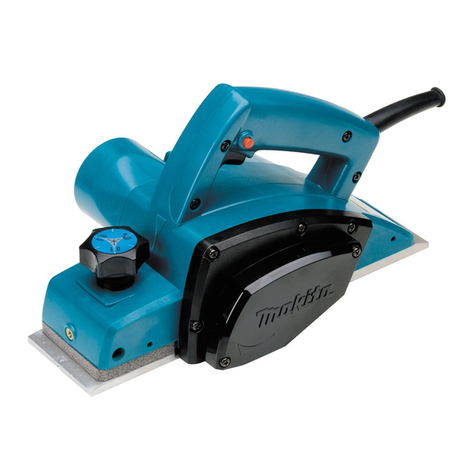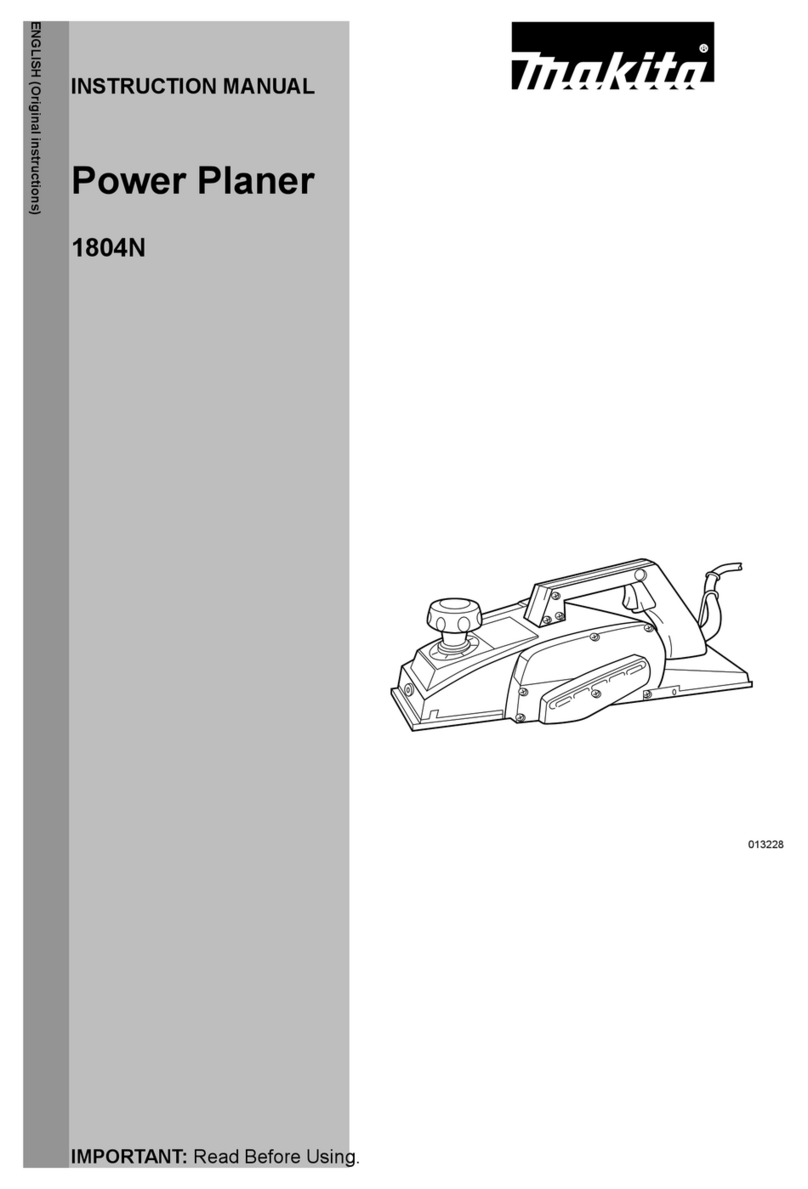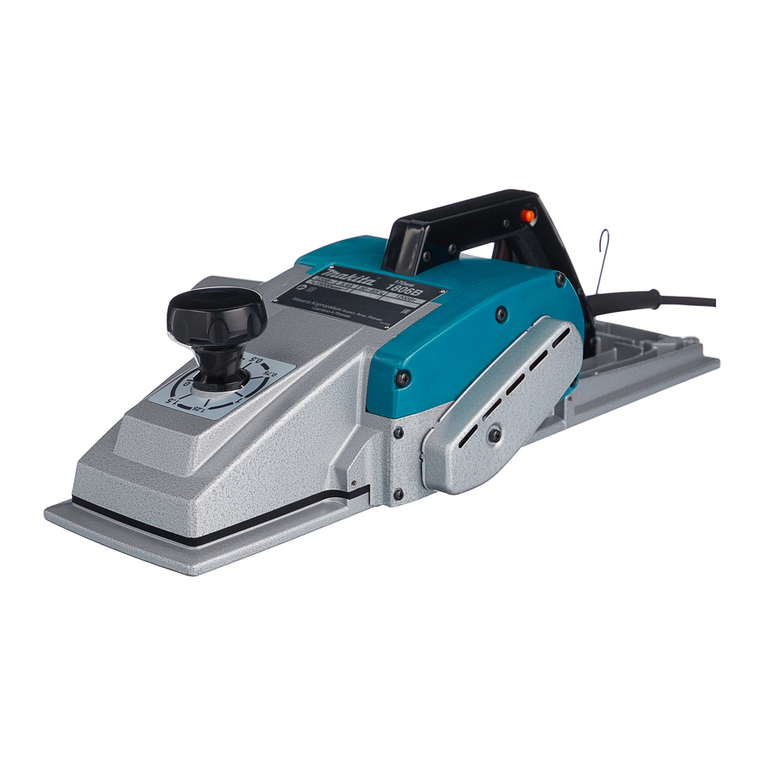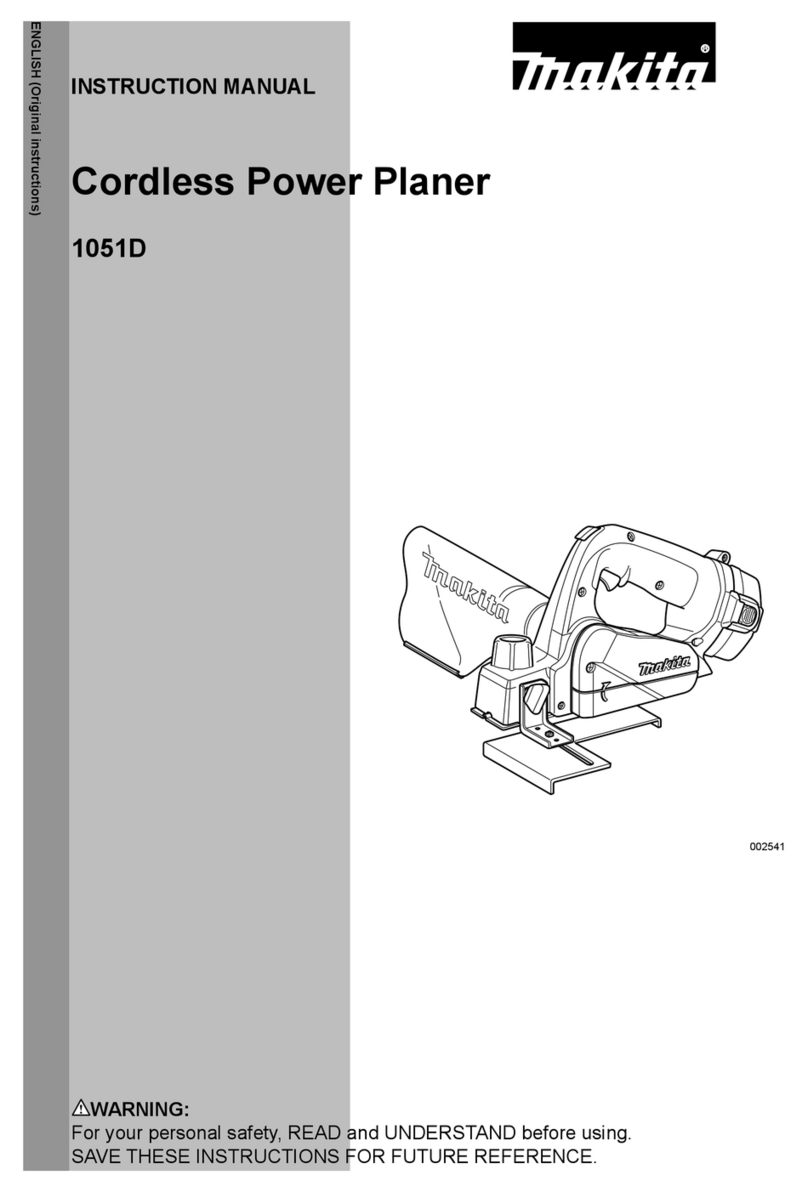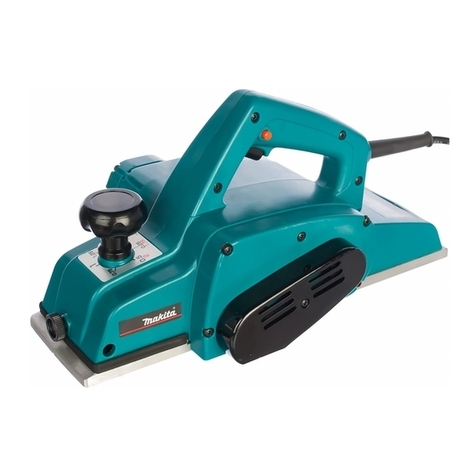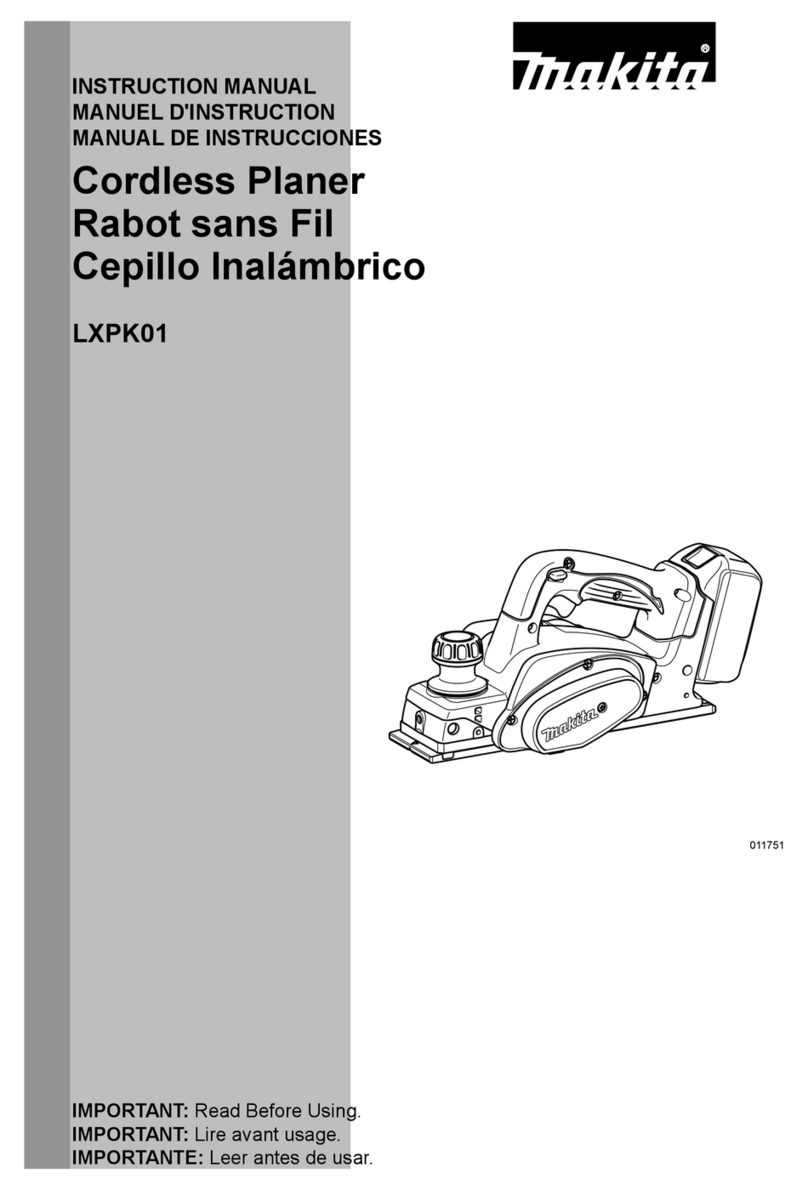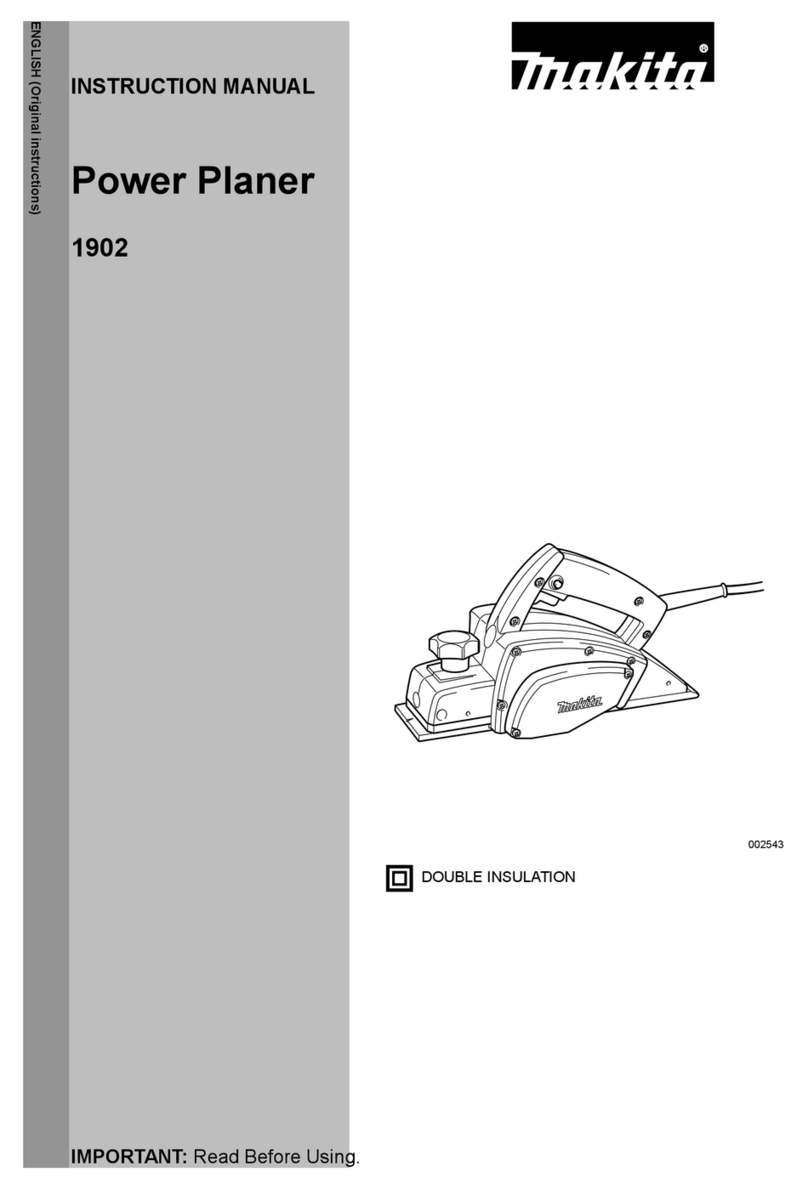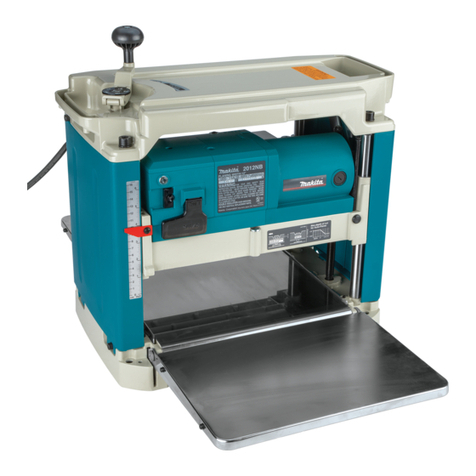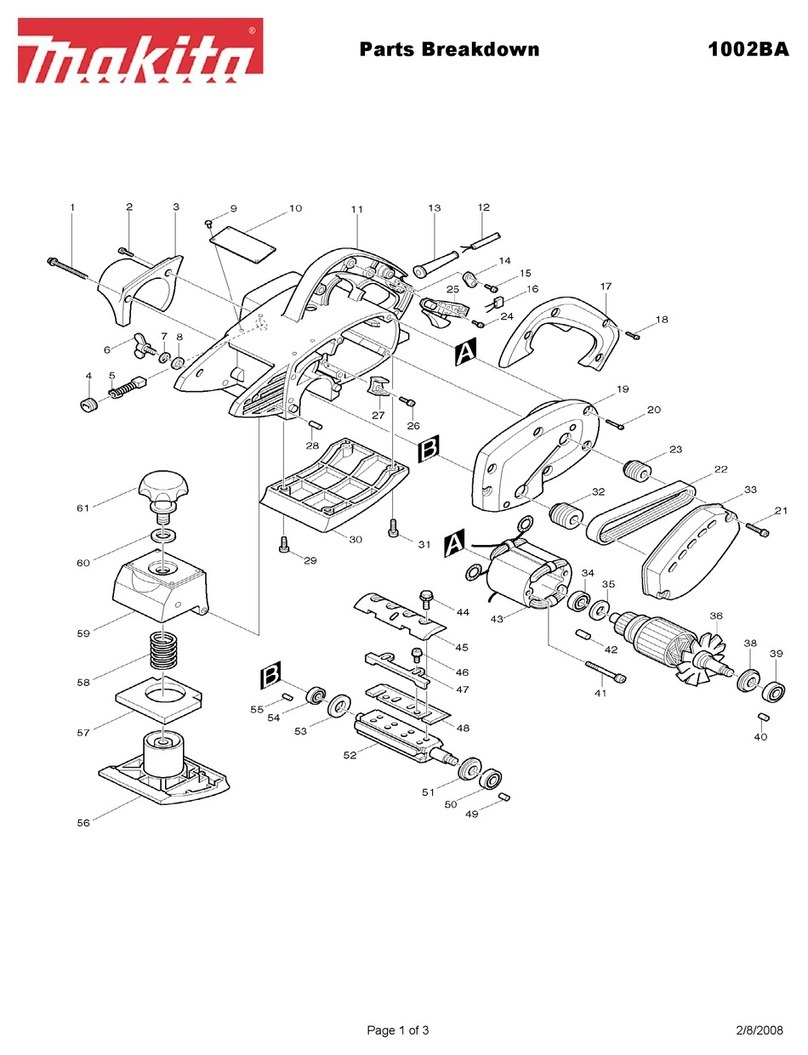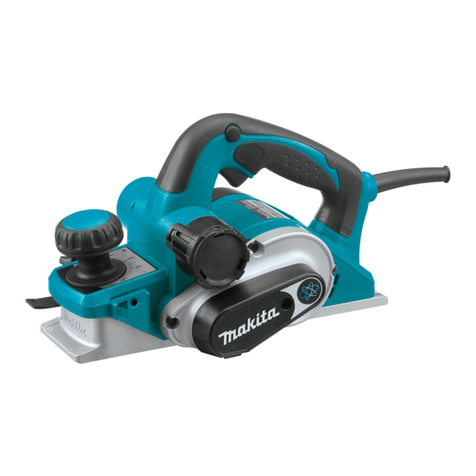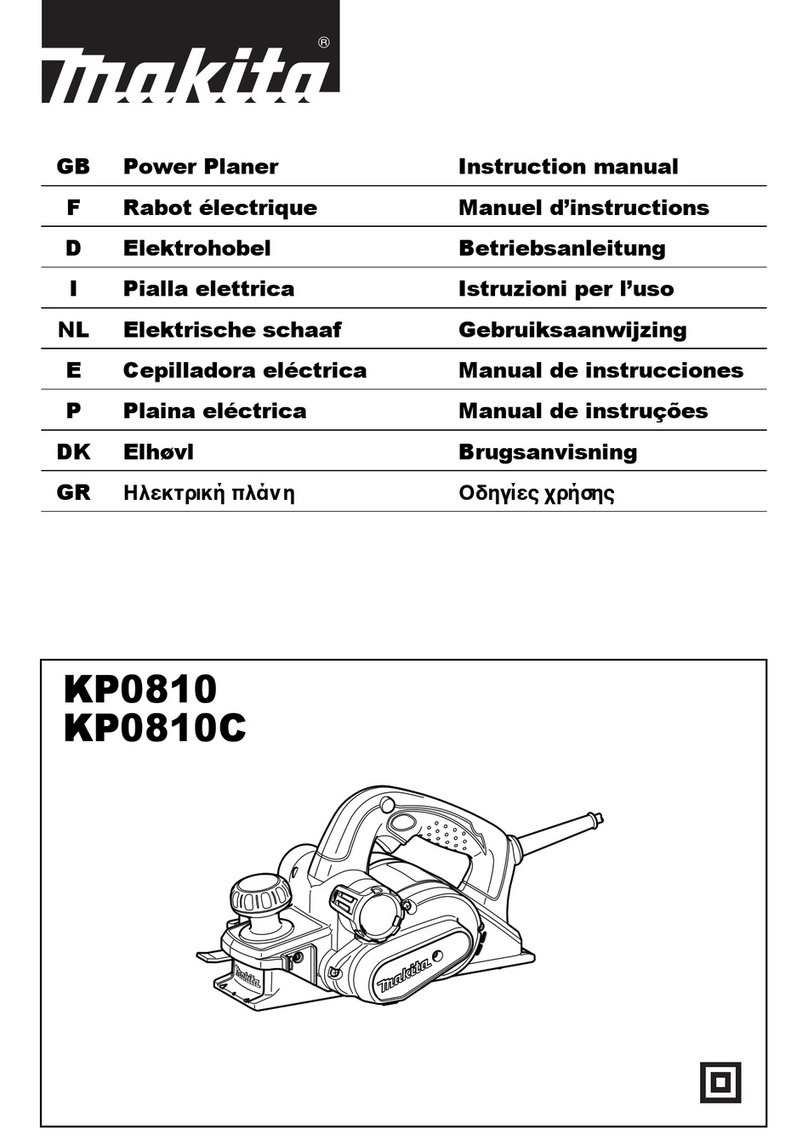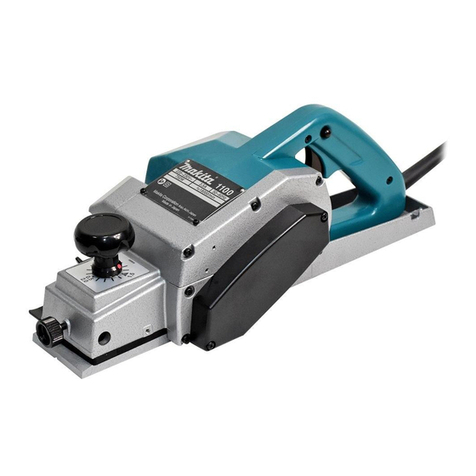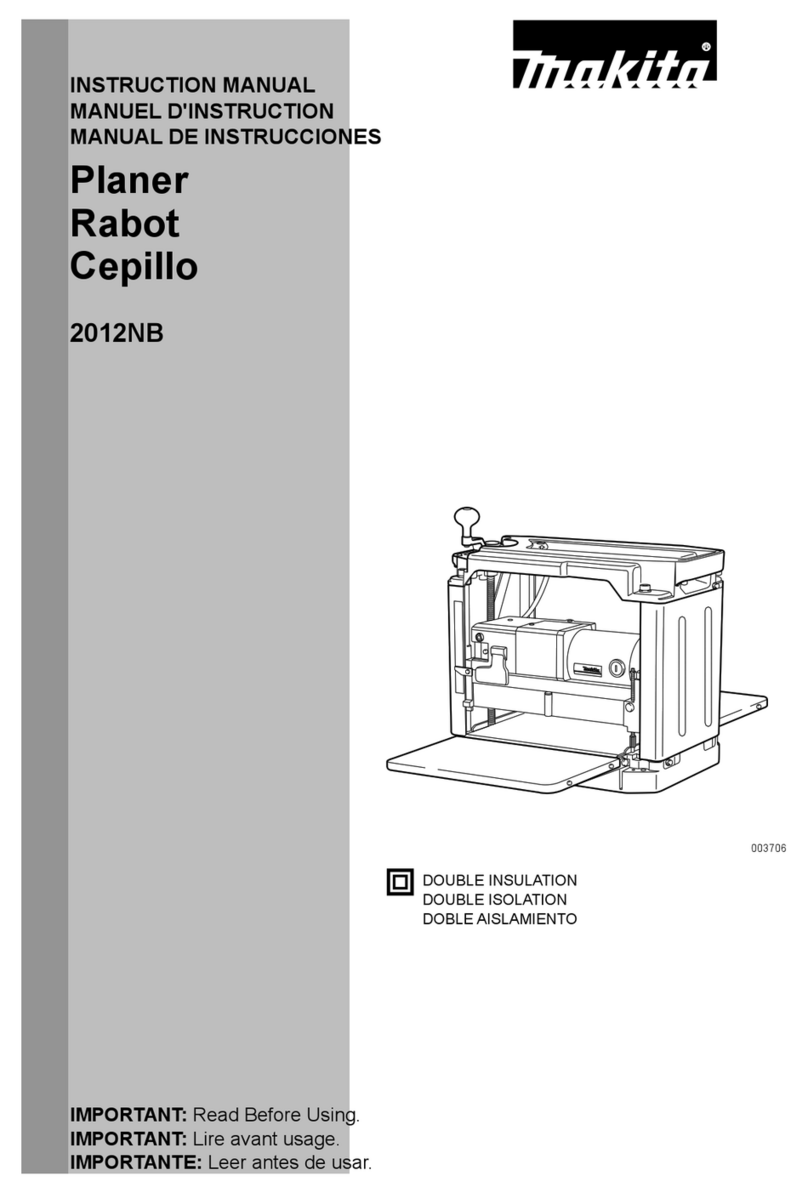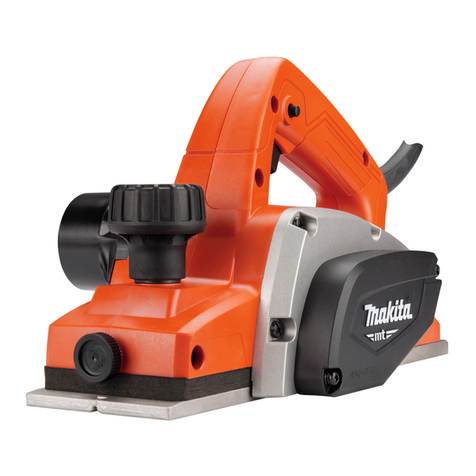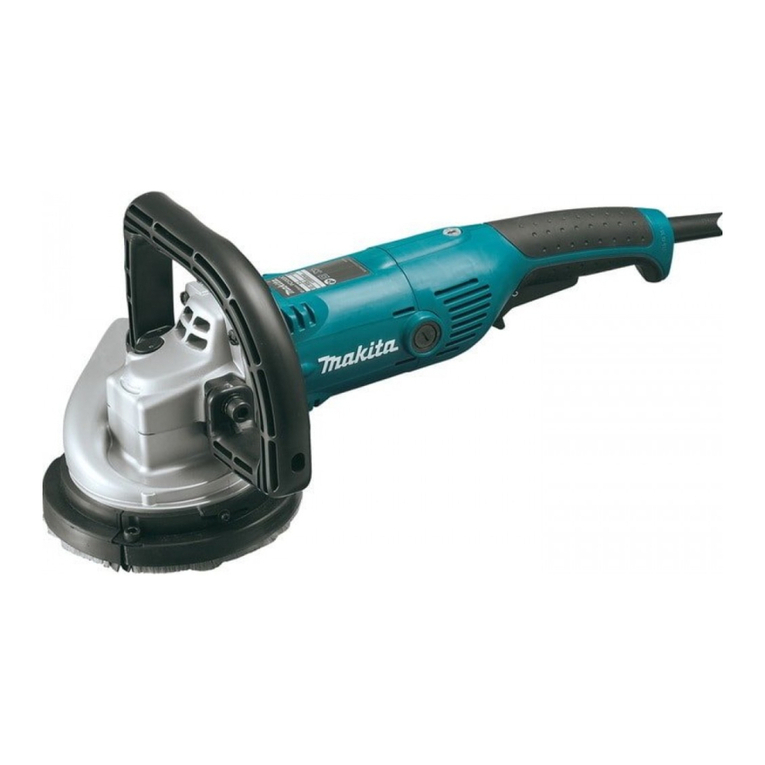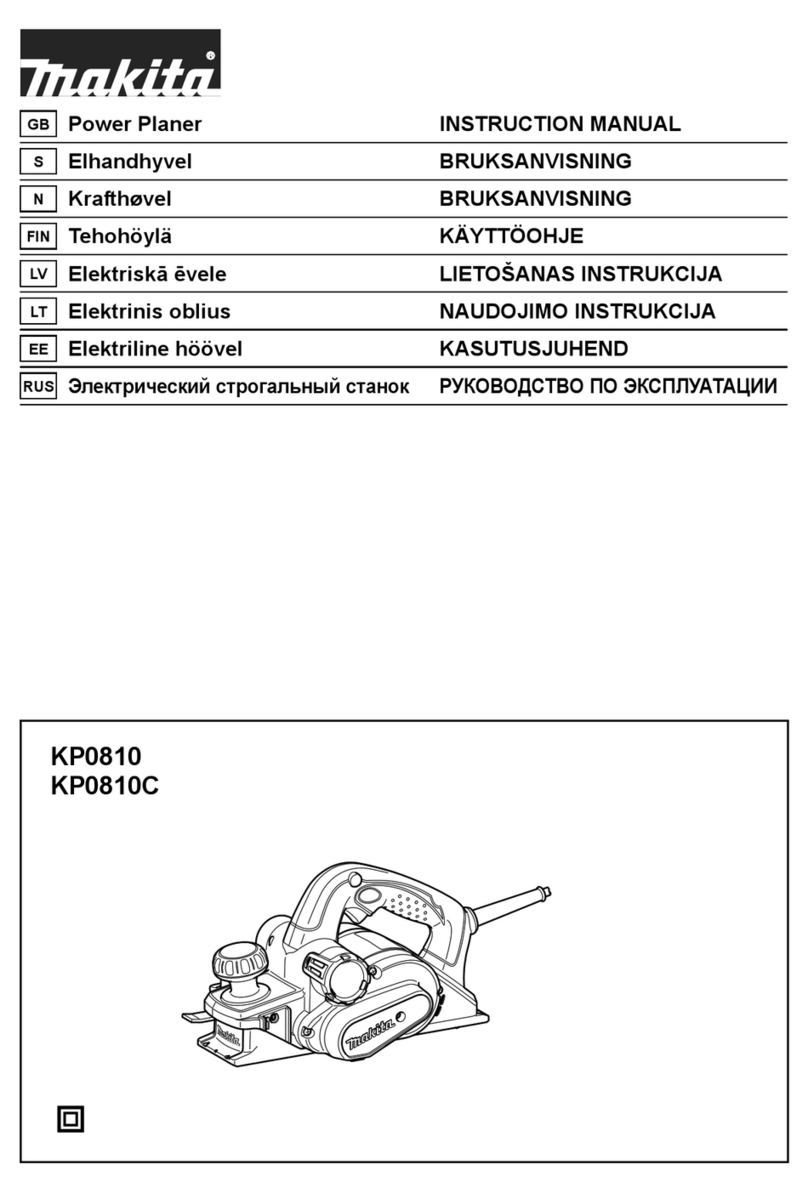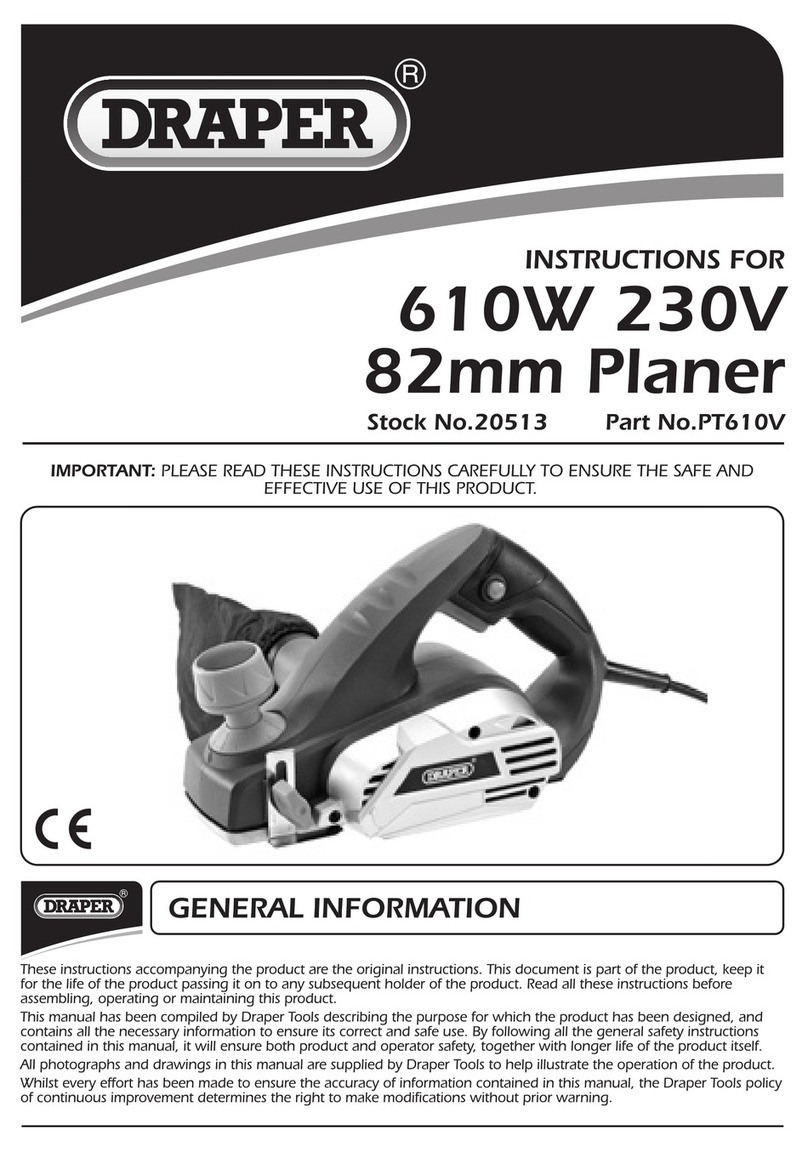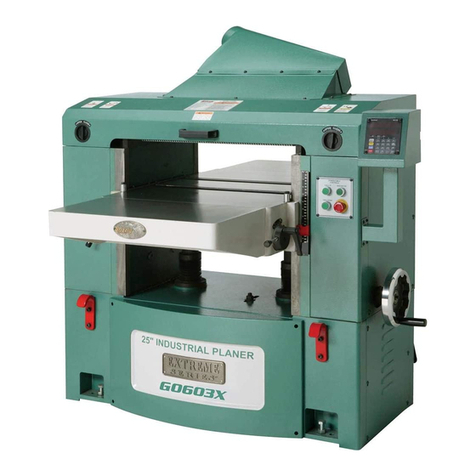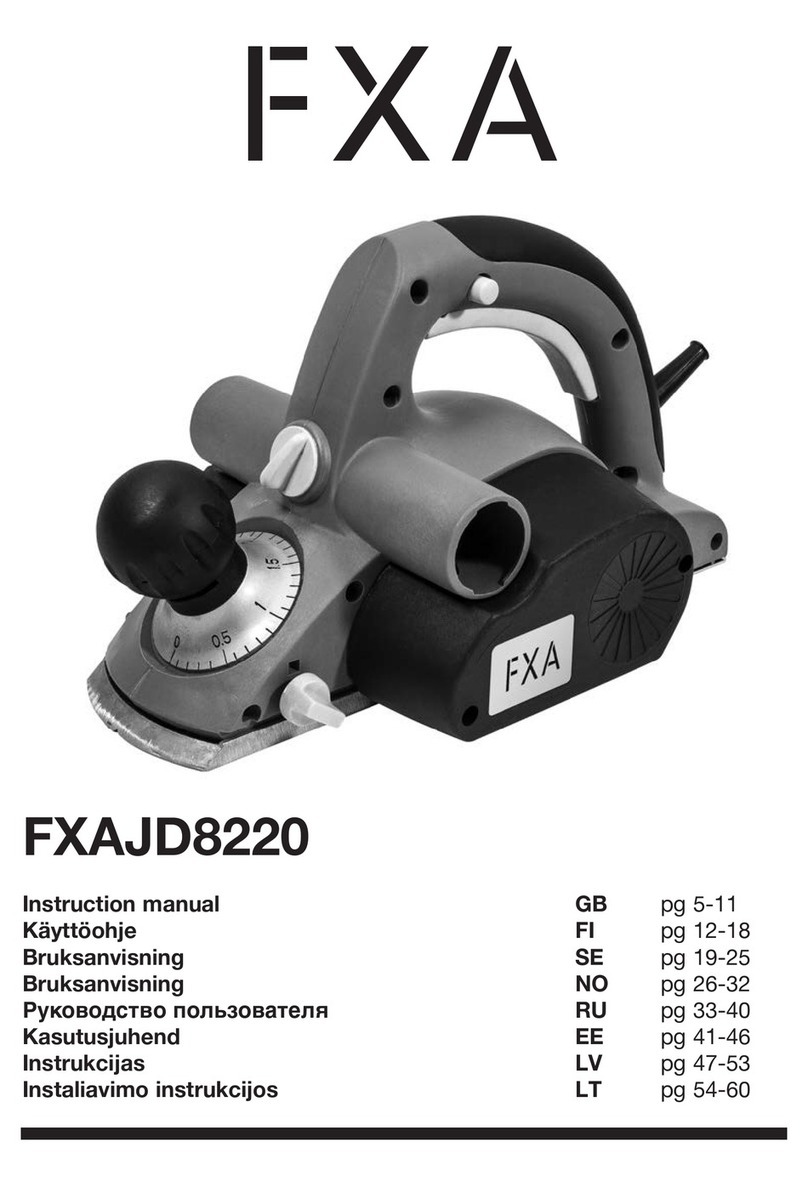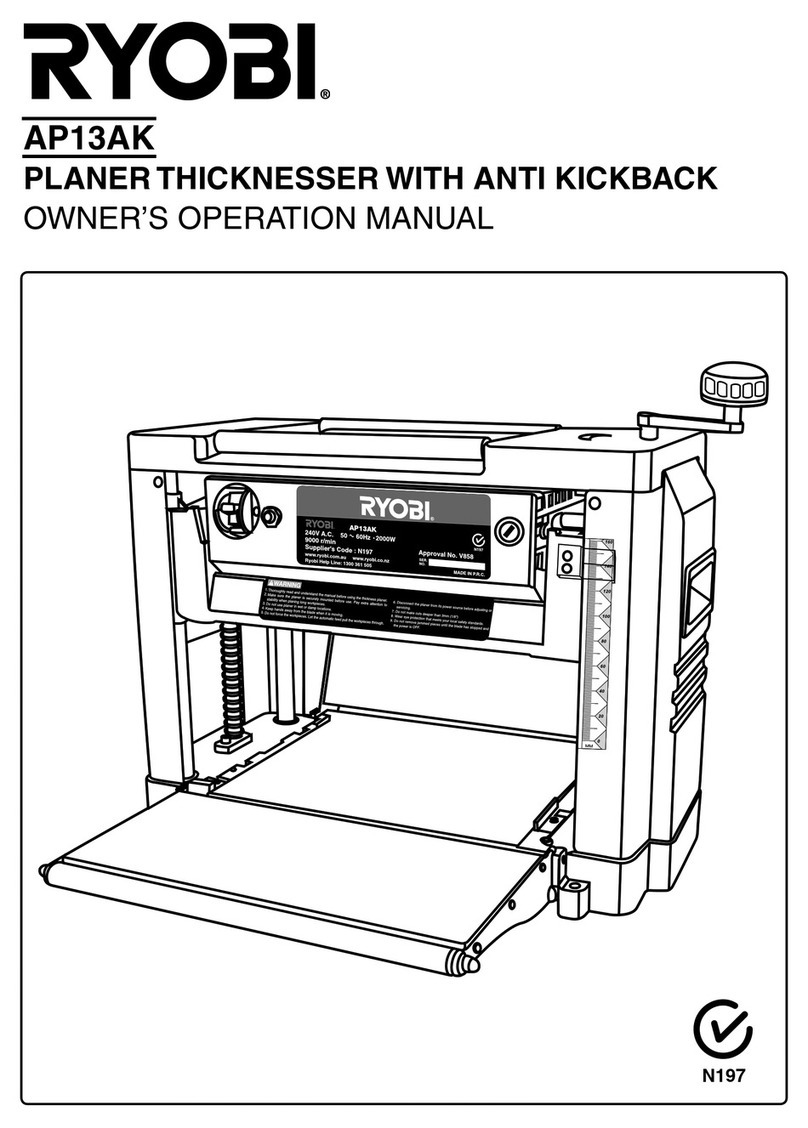19
5. Kontroleer alvorens te schaven of de bevesti-
gingsbouten van de messen stevig vastgedraaid
zijn.
6. Houd de machine met beide handen stevig vast.
7. Houd uw handen uit de buurt van de bewegende
delen.
8. Alvorens de machine op een werkstuk te gebrui-
ken, laat u het een tijdje draaien. Onderzoek het
op vibraties of schommelende bewegingen die
op een onjuiste installatie of onjuist gebalan-
ceerde messen kunnen wijzen.
9. Zorg dat de messen niet in aanraking zijn met
het werkstuk als u de machine in wilt schakelen.
10. Wacht alvorens te schaven tot de messen op
volle snelheid draaien.
11. Zorg dat u de machine ten alle tijde op een
afstand houdt van minstens 200 mm.
12. Alvorens iets bij te stellen dient u altijd de
machine uit te schakelen en te wachten totdat de
messen volledig tot stilstand zijn gekomen.
13. Steek uw vinger nooit in de spaanafvoer. De spa-
nen kunnen erin klem raken als u nat hout
schaaft. Verwijder in dit geval de spanen met een
stukje hout.
14. Schakel altijd uit als u de machine niet gebruikt.
Schakel de machine alleen in als u het in handen
houdt.
15. Wanneer u de machine achterlaat, schakel het
uit en zet het op een plankje met het voorstuk
naar boven gericht zodat de messen niets aanra-
ken.
16. Vervang altijd gelijktijdig beide messen en klem-
platen, aangezien anders het resulterende ver-
lies van evenwicht trillingen kunnen
veroorzaken, waardoor de gebruiksduur van de
machine verkort kan worden.
17. Wacht totdat de messen volledig tot stilstand
zijn gekomen, alvorens de machine opzij te zet-
ten.
18. Gebruik alleen Makita messen die in deze
gebruiksaanwijzing zijn gespecificeerd.
BEWAAR DEZE VOORSCHRIFTEN.
BEDIENINGSVOORSCHRIFTEN
Installeren of verwijderen van de accu (Fig.1)
• Schakel het gereedschap altijd uit alvorens de accu te
installeren of te verwijderen.
• Om de accu te verwijderen, neemt u deze uit het
gereedschap terwijl u de knoppen aan beide zijden van
de accu indrukt.
• Om de accu te installeren, past u de rug op de accu in
de groef in de behuizing van het gereedschap, en dan
schuift u de accu naar binnen. Schuif de accu zo ver
mogelijk erin, totdat deze met een klikgeluid vergren-
delt. Indien u dit niet doet, kan de accu per ongeluk uit
het gereedschap vallen en uzelf of anderen verwon-
den.
• Als de accu moeilijk in de houder gaat, moet u niet pro-
beren hem met geweld erin te duwen. Indien de accu
er niet gemakkelijk ingaat, betekent dit dat u hem niet
op de juiste wijze erin steekt.
Instellen van de schaafdiepte (Fig. 2 en 3)
De schaafdiepte kan worden ingesteld in stapjes van
0,1 mm binnen een bereik van 0 – 0,5 mm. Draai de
knop op de voorkant van de machine totdat de wijzer de
gewenste schaafdiepte op de schaal aanwijst.
LET OP:
De knop kan verder dan de 0,5 mm schaalverdeling wor-
den gedraaid. Gebruik de machine echter niet met een
schaafdiepte van meer dan 0,5 mm, aangezien er dan
kans is dat de motor doorbrandt of de accu beschadigd
raakt.
Werking van de trekschakelaar (Fig.4)
LET OP:
Alvorens de accu in de machine te plaatsen, moet u altijd
controleren of de trekschakelaar juist werkt en bij het los-
laten naar de “OFF” positie terugkeert.
Deze machine is voorzien van een ontgrendelknop, om
te voorkomen dat de trekschakelaar per ongeluk wordt
ingedrukt.
Om de machine te starten, drukt u de ontgrendelknop in
en daarna drukt u de trekschakelaar in. Om de machine
te stoppen, laat u de trekschakelaar los.
Schaven (Fig. 5)
Leg eerst het voorste zoolvlak van het gereedschap plat
op het oppervlak van het werkstuk zonder dat de messen
ermee in aanraking komen. Schakel het gereedschap in
en wacht totdat de messen op volle snelheid draaien.
Beweeg daarna het gereedschap langzaam naar voren.
Oefen druk uit op het voorste gedeelte van het gereed-
schap wanneer u begint te schaven, en op het achterste
gedeelte wanneer het einde nadert. Het schaven gaat
gemakkelijker wanneer u het werkstuk een beetje schuin
vastklemt, zodat u kunt schaven met het gereedschap
iets naar beneden gericht.
De snelheid waarmee u schaaft en de schaafdiepte
bepalen het resultaat. Het gereedschap blijft schaven
met een snelheid die voorkomt dat het schaafmes door
houtspanen klem kan raken. Voor ruw schaven kunt u de
schaafdiepte vermeerderen. Om een goede afwerking te
krijgen, moet u de schaafdiepte verminderen en het
gereedschap langzamer naar voren bewegen.
Breedtegeleider (Zijkantgeleider) (Fig. 6)
Gebruik de breedtegeleider voor het maken van sponnin-
gen of voor het maken van sneden in werkstukken die
ongeveer 50 mmbreed zijn. Monteer de breedtegeleider
op de machine en zet deze vast door middel van de
sluitring en vleugelschroef (A). Draai vleugelschroef (B)
los en stel de breedtegeleider af zodat deze contact
maakt met de zijkant van het werkstuk. Draai daarna
vleugelschroef (B) goed vast.
Soms is het wenselijk voor betere geleiding van de
machine de geleider te verlengen. Dit kunt u doen door
een lat te bevestigen. De geleider is voor dit doel voor-
zien van gaten. (Fig. 7)

